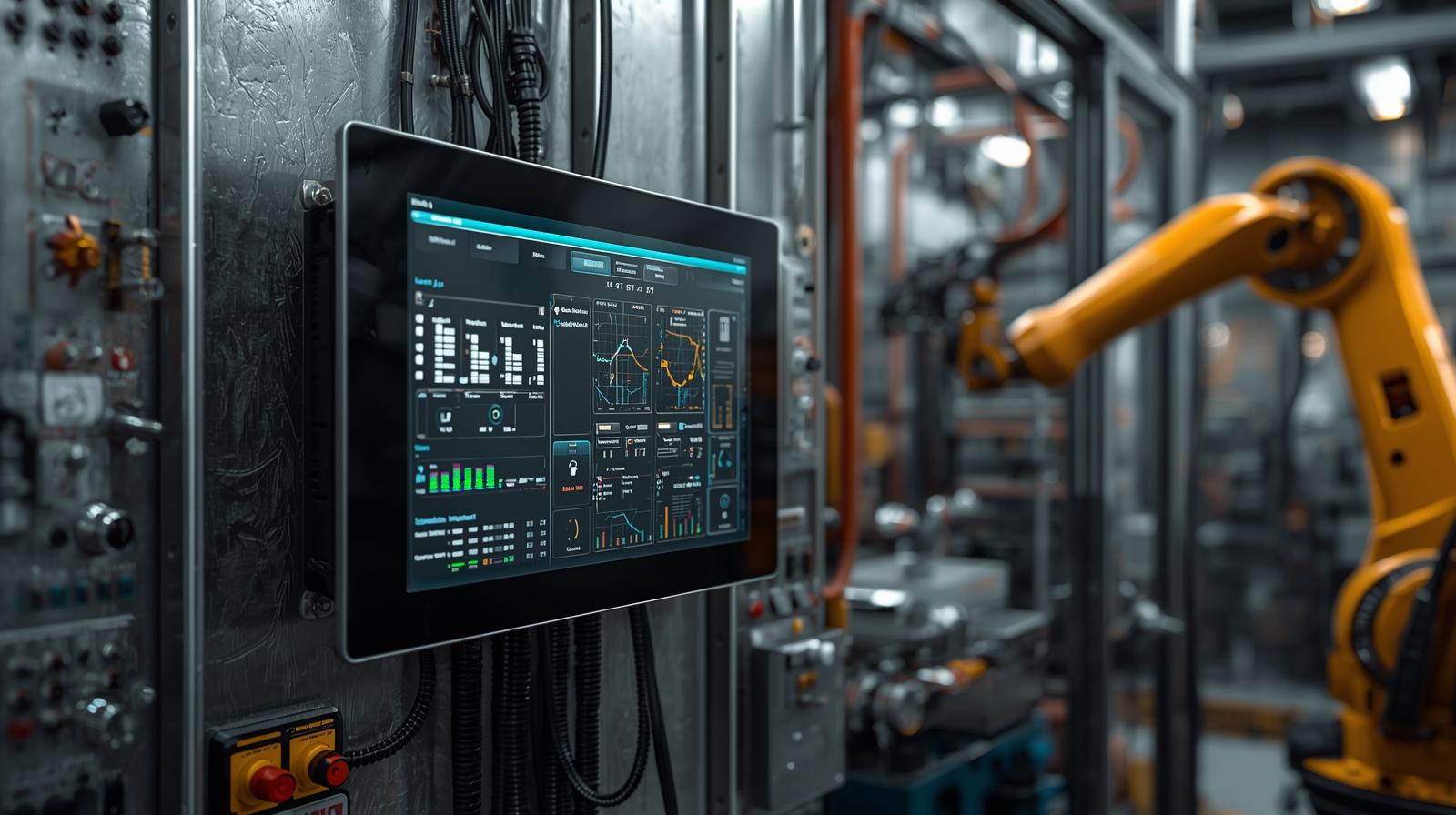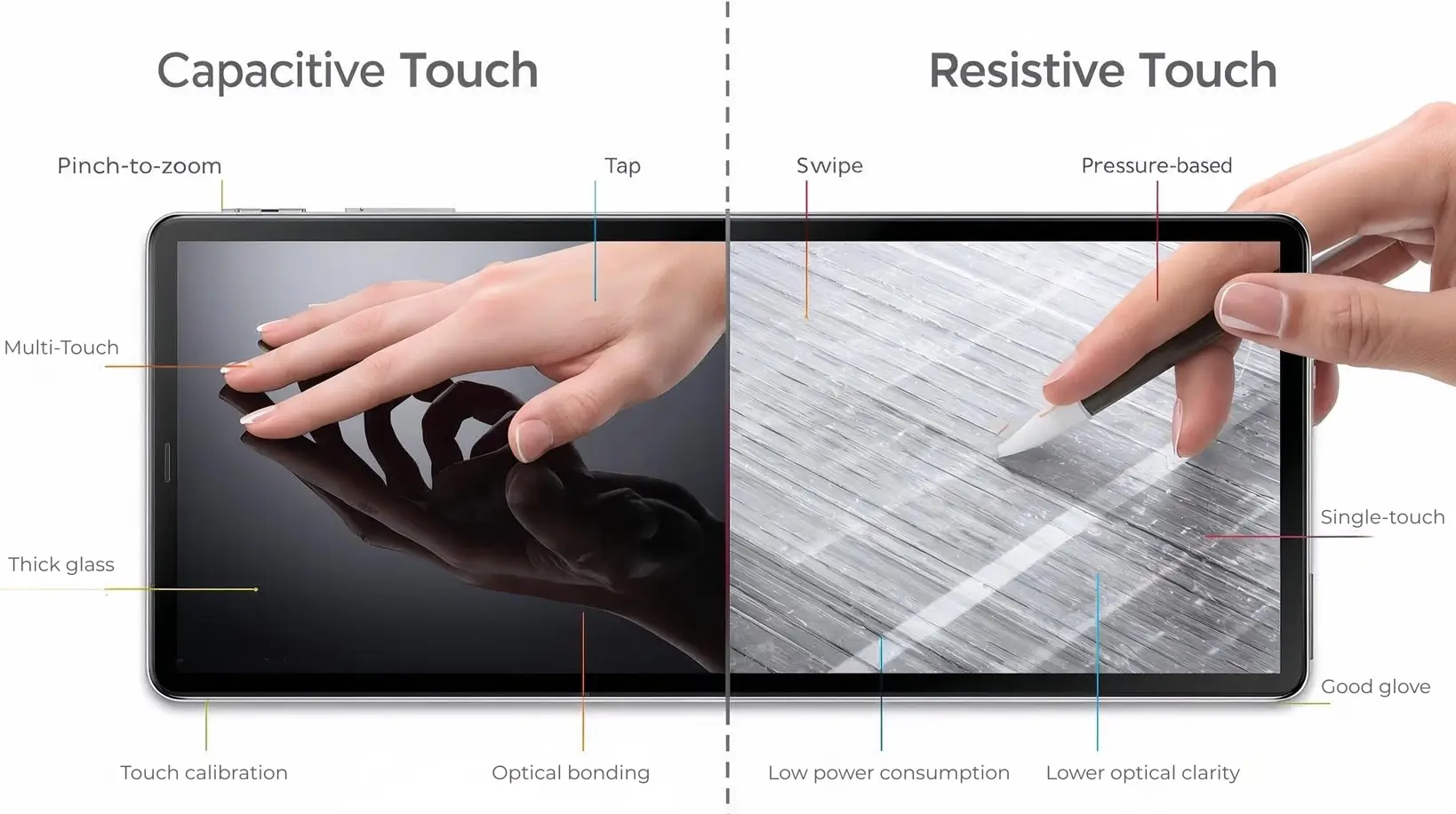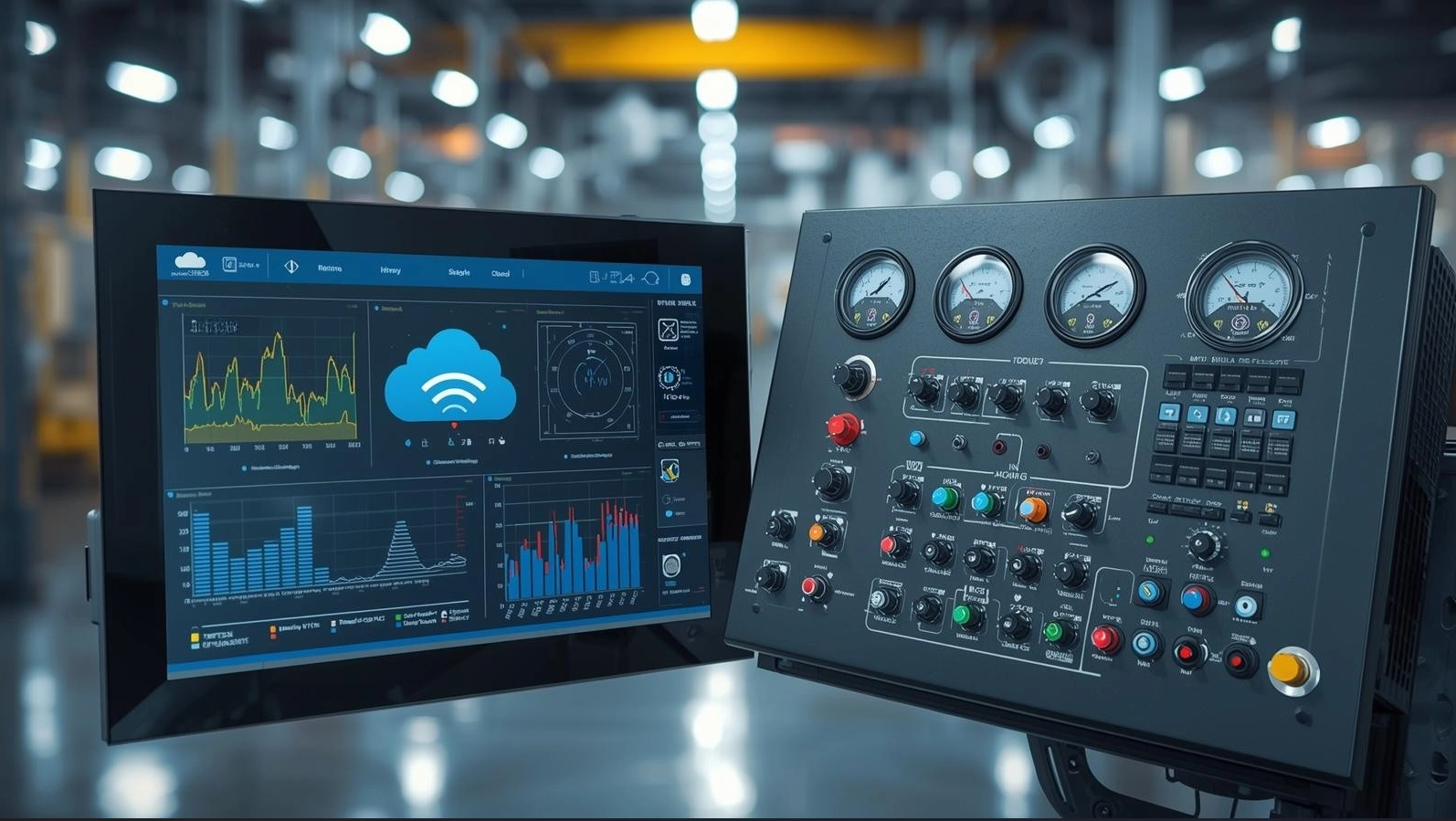A Touch Panel PC, also commonly referred to as an industrial panel PC, is an all-in-one computing solution that combines a rugged touchscreen display with the embedded computing power typically found in industrial PCs. Designed to thrive in the most demanding environments—from manufacturing floors to outdoor installations—these devices eliminate the need for separate monitor enclosures while delivering space-saving and user-friendly designs. For system integrators (SIs), Touch Panel PCs serve as the critical human-machine interface (HMI), bridging control systems, sensors, and supervisory applications. In this article, we unpack their definition, differences from conventional PCs, touch technologies, integration advantages, SI pain point solutions, purchasing guidance, frequently asked questions, and highlight Beyond Info System’s offerings.
Understanding the Basics of Touch Panel PCs
What Exactly Is a Touch Panel PC? Definition and Core Functions
A Touch Panel PC (industrial touchscreen computer) is a device that merges a touchscreen display with industrial-grade computing hardware in a unified enclosure. These devices typically feature ruggedized designs—such as sealed enclosures with protection against dust, water, and extreme environments—and are purposed for continuous 24/7 operation. They support control interfaces, data visualization, and HMI tasks out of the box, making them indispensable in sectors like manufacturing, healthcare, logistics, and utilities.
Key capabilities include:
- Seamless touch input via resistive, capacitive, or projection-capacitive sensors
- Comprehensive I/O for industrial communication (e.g., serial ports, Ethernet, COM, CAN-bus)
- Compatibility with automation systems (SCADA, MES, PLC, HMI software)
- Multiple mounting styles: panel mount, VESA, rackmount, or DIN-rail
- Enhanced reliability: fanless design, wide temperature tolerance, shock-proof construction
How Do Touch Panel PCs Differ from Traditional Industrial PCs?
Below is a comparative overview:
| Aspect | Touch Panel PC | Traditional Industrial PC (IPC) |
|---|---|---|
| Form Factor | Integrated touchscreen + computing unit | Separate chassis with external display and peripherals |
| Space Efficiency | Compact, ideal for tight control panels | Requires additional space for screen and input devices |
| User Interaction | Touch-first, intuitive interface | Requires peripherals like keyboard; less ergonomic |
| Mounting Options | Panel, wall, VESA, embedded configurations | Chassis-based—often rack or cabinet-mounted |
| Suitable Environments | HMI stations, kiosks, embedded control points | Backend control and server tasks |
Traditional IPCs are often used behind the scenes, while Touch Panel PCs sit at the frontlines of operation—delivering visible control interfaces and direct user interaction.
Touch Technologies – Resistive vs. Capacitive (P-CAP) Explained
Touch Panel PCs typically offer two main touchscreen technologies:
| Technology | Operation Method | Advantages | Best Use Cases |
|---|---|---|---|
| Resistive | Responds to pressure | Cost-effective; works with gloves or stylus | Oil-prone factories, controlled environments |
| Capacitive (P-CAP) | Detects touch through conductive properties | Supports multitouch and gestures; sleek visuals | Retail kiosks, POS, medical interfaces |
Resistive screens feature layered construction that registers touch via pressure. They are ideal for harsh conditions due to their robustness. Capacitive (P-CAP) touchscreens, on the other hand, enable more responsive interfaces including multitouch, but may require conductive input. The right choice depends on environment, user interface needs, and cost constraints.
The Value of Touch Panel PCs in Systems Integration
How Touch Panel PCs Integrate Automation Equipment and HMI
For SIs, Touch Panel PCs are not just hardware—they form the operational interface that bridges machines, sensors, and control systems:
- Out-of-the-box compatibility with SCADA and HMI platforms such as Ignition, WinCC, and Wonderware
- Support for standard industrial communication protocols (Modbus RTU/TCP, CAN-bus, OPC UA, etc.)
- Direct connection to MES systems, robotic systems, and automation modules via robust I/O support
These integration capabilities streamline deployment—reducing system complexity and maximizing uptime.
Achieving Reliable Communication and Data Synchronization Across Platforms
Synchronization and interoperability lie at the heart of successful integration:
| Challenge | Touch Panel PC Solution | Benefit to SI |
|---|---|---|
| Data exchange efficiency | Multi-protocol support and driver compatibility | Reduces custom coding and integration time |
| Platform support | Runs Windows and Linux OS | Greater software flexibility |
| Continuous uptime | Dual Ethernet ports, hot-swappable designs | Ensures redundancy and stability |
These features increase deployment speed and reliability—key priorities for integrators managing diverse automation stacks.
Importance of Rich I/O and Protocol Support for Integrators
A Touch Panel PC equipped with versatile interfaces delivers immense flexibility:
- Serial ports (RS‑232/422/485) for legacy PLCs or sensors
- USB and HDMI for connecting peripherals or additional displays
- LAN/WAN ports (some models include PoE) for streamlined power and network connectivity
- GPIO or CAN-bus options for custom sensor integration
More built-in I/O reduces the need for external converters or modules—a compelling advantage during installation and maintenance phases.
Common Pain Points for System Integrators & How Touch Panel PCs Address Them
Incompatibility of Drivers—What’s the Fix?
Integration projects often struggle with mismatched drivers or unsupported peripherals. Touch Panel PCs help by offering:
- Cross-platform OS options (Windows/Linux) with certified drivers
- Development SDKs and APIs for wrapping legacy control logic
- Compatibility with platform-native controls (CODESYS, LabVIEW, etc.)
This simplifies the software stack and accelerates time to delivery.
Deployment Challenges in Tight Spaces or Complex Wiring
Physical installation hurdles can stall projects. Touch Panel PCs mitigate this with:
- Slim, embedded or VESA-mount designs (ideal for compact panels)
- Power-over-Ethernet (PoE) options that reduce power cabling
- Wide-voltage input designs (e.g., DC 9–36V) for mobile or vehicle-mounted scenarios
These features reduce installation time and labor costs in constrained environments.
Need for Efficient Maintenance and Remote Diagnostics
Post-install support is an integral part of SI responsibilities. Effective Touch Panel PCs contribute via:
- BIOS-level configuration and recovery tools (remote image restoration)
- Watchdog timers or auto-reboot functionality for fault recovery
- Optional remote management modules (such as Intel AMT) for out-of-band access
These capabilities lower the frequency and cost of field maintenance, improving SLAs and customer satisfaction.
Buying Guide – Essential Specs and Considerations
Processor, Memory, Storage, and Display Size Matters
Selecting the right technical specs ensures performance and longevity:
| Component | Recommended Specs | Application Insights |
|---|---|---|
| Processor | Intel Celeron / Core i series / ARM | Match core compute needs to application demands |
| Memory | 4GB / 8GB / 16GB DDR4 | Multitasking and UI responsiveness |
| Storage | 64GB / 128GB SSD (preferably NVMe) | Faster boot and enhanced durability |
| Display Size | 7” to 21.5” or larger | Larger screens ideal for dashboards or detailed visuals |
A minimum display resolution of 1024×768 is preferred for clarity on control screens.
How to Identify Rugged, Industrial-Grade Builds
Robustness is non-negotiable in harsh environments:
| Attribute | Details to Look For | Why It Matters |
|---|---|---|
| Dust & Water Resistance | IP65 or IP67 front panel | Essential for washdown or dust-prone settings |
| Shock Resistance | Fanless, aluminum-chassis design | Increases durability and reduces moving parts |
| Temperature Range | Operation from –20°C to 60°C | Suitable for outdoor, refrigerated, or uncontrolled environments |
| Compliance | MIL‑STD‑810G, vibration ratings | Ensures reliability under stress testing |
Check datasheets to validate manufacturers’ claims through tested specifications.
I/O Options—PoE, VESA, Serial, USB and How They Impact Integration
Effective peripheral and network support is essential:
| Interface | Use Case | Points to Consider |
|---|---|---|
| PoE | Simplified power + network via single cable | Confirm PoE version (e.g., 802.3af/at compliance) |
| Serial RS‑232/485 | Legacy control units and sensors | Ensure at least 2–4 ports to support flexibility |
| USB | Barcodes, RFID, memory sticks, cameras | USB 3.0 preferred for speed and future-proofing |
| HDMI/VGA | Secondary displays or operator outputs | Helpful in control rooms or large HMI setups |
| VESA Mounting | Wall or arm support for flexible placement | Enables ergonomic and space-saving setups |
A well-configured Touch Panel PC significantly reduces supplementary equipment and simplifies field deployment.
Frequently Asked Questions (FAQ) for System Integrators
Does a Touch Panel PC Support Linux?
Yes. Most industrial-grade Touch Panel PCs offer Linux support—Ubuntu, Debian, and Yocto variants are common. Many vendors supply Linux-validated drivers and SDK kits to aid embedded development, especially for IoT and automation applications.
Tip: Select models with Linux compatibility confirmed by the manufacturer—this minimizes driver and stability challenges during development.
Can Touch Panel PCs Integrate with SCADA, PLC, and Automation Systems?
Absolutely. These devices are designed to work seamlessly with automation systems, thanks to their support for major industrial protocols (Modbus RTU/TCP, CAN-bus, OPC UA), serial communication, and Ethernet connectivity. They are compatible with popular HMI/SCADA platforms like WinCC, Ignition, and MES interfaces.
Tip: Before deployment, verify port counts and software environment support for your integration tools to avoid last-minute technical hurdles.
What Should You Know About Warranty and After-Sales Support?
After-sales support is critical for long-term system reliability. When choosing a provider, ensure they offer:
- At least 1 year of warranty coverage
- Rapid RMA or replacement services
- Technical reference materials or accessible support channels
- Remote diagnostics and system backup functionalities
- Long-term supply commitments (e.g., 3–5 year continuation) and EOL notifications
Tip: These support structures reduce risks for SIs and ensure smoother project lifecycle management.
Beyond Info System’s Product Line and Integration Services
Overview of Beyond Info System’s Industrial Touch Panel PC Series
Below is a summary of Beyond Info System’s prominent Touch Panel PC offerings, designed with integrators in mind:
| Series | Key Features | Ideal Use Cases |
|---|---|---|
| Chassis VESA Mount Series | Fanless design, aluminum chassis, VESA-mount, multiple I/O | Embedded panels, machinery HMI stations |
| Stainless Steel Series | IP65/IP67 rated front panel, robust design, shock resistant | Outdoor or washdown environments, vehicle-mounted equipment |
| Panel Mount Series | Intel Core i CPUs, aluminum alloy enclosure, PoE support | High-performance control centers and dashboards |
Explore product details and technical specs on Beyond Info System’s official site: www.beyondinfosys.com.
Integration Services and Customization Offered for System Integrators
Beyond Info System supports end-to-end integration with the following value-added services:
- BIOS and OS customization (e.g., Linux or Windows Embedded configurations)
- Modular I/O and interface expansion options
- Long-term availability and transparent EOL planning
- Pre-deployment technical consulting and system evaluation
- ODM/OEM services for custom dimension, branding, or embedded requirements
These services help SIs by delivering not just hardware but full integration solutions, tailored for system lifecycle and project success.
Discover More on Beyond Info System
Our strengths lie in:
- Customization: CPU, SSD, I/O, firmware, and housing
- Fast delivery: Samples in 7 days, mass production in 3–4 weeks
- Low MOQ: Ideal for diverse, small-batch projects
- 24-hour response time & 100% burn-in test before shipment
For deeper insights into specific products and use cases, please contact us.
Conclusion
This in-depth guide has clarified what Touch Panel PCs are, why they’re essential for seamless systems integration, how to evaluate and select them, and how they directly address key pain points faced by system integrators. Armed with this knowledge and the understanding of Beyond Info System’s product suite and services, integrators can confidently design resilient, efficient, and future-proof automation solutions. Let me know if you’d like a polished HTML, WordPress draft, or marketing conversion version next!



